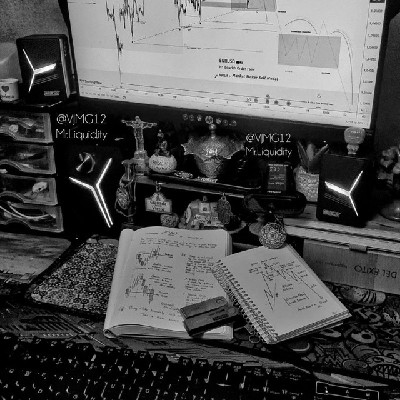MLからJPYへの交換
現在のMintlayer価格(JPY)
Mintlayerの価格は今日上がると思いますか、下がると思いますか?
Mintlayerの市場情報
Mintlayer (ML)について
Mintlayerとは?
Mintlayerは、分散型金融(DeFi)、スマートコントラクト、トークン化、分散型取引をビットコインで直接可能にして、ビットコインブロックチェーンを強化するように設計されたプルーフ・オブ・ステイク(PoS)レイヤー2プロトコルです。このプラットフォームは、スマートコントラクト機能の欠如やスケーラビリティの問題など、ビットコインの限界に対処しつつ、堅牢なセキュリティと広く普及しているビットコインを活用することを目指しています。2024年1月29日に、Mintlayerはメインネットをローンチしました。
Mintlayerは、より広範で包括的な金融エコシステムの基盤としてのビットコインの可能性を認識したことから生まれました。ビットコインネットワークのサイドチェーンとして動作し、ビットコインのセキュリティとPoSシステムの柔軟性とスケーラビリティを組み合わせた独自のコンセンサスメカニズムを利用します。このアプローチは、取引のスループットと効率を高めるだけでなく、セキュリティや分散化に妥協することなく、DeFiプロジェクトやトークン化された資産など、より幅広い金融サービスやアプリケーションにビットコインを開放します。
関連資料
公式ドキュメント: https://docs.mintlayer.org/
公式ウェブサイト: https:// www.mintlayer.org/en/
Mintlayerの仕組み
Mintlayerは、ビットコインのアンカリング、チェックポイント、ランダム化された選択といった高度なシステムを利用して、ネットワークの完全性と安全性を確保しています。Mintlayerのすべてのブロックはビットコインのブロックチェーン上のブロックに固定されており、ビットコインの比類ないセキュリティを活用して独自のネットワークを保護しています。このプロセスにより、Mintlayerはレイヤー2の機能を運用しながら、ビットコインのブロックチェーンの堅牢性の恩恵を受けることができます。チェックポイント・システムは、取引の取り消しや改ざんを事実上不可能にすることで、潜在的な攻撃からネットワークをさらに保護し、ブロックチェーンの完全性を維持します。
セキュリティ対策に加え、Mintlayerはスケーラビリティとユーザー参加への斬新なアプローチを導入しています。バッチ処理と動的なスロット割り当てメカニズムにより、1回の操作で複数のトークンを取引できるため、取引コストとネットワークの混雑を大幅に削減できます。このシステムはスケーラビリティを向上させるだけでなく、ネットワークのメンテナンスへの民主的な参加を促します。ユーザーはMintlayerネイティブトークン(ML)をステークしてブロックの作成と検証に参加でき、選ばれる確率はステークしたMLの量に比例します。このステーキングの仕組みは、コミュニティの積極的な参加を促し、ブロックの検証と作成のための公正で分散化されたプロセスを保証します。
MLトークンとは?
MLはMintlayerエコシステムのネイティブトークンです。取引手数料の支払い、ネットワーク参加のためのステーキング、スマートコントラクトの作成などに使用できます。MLトークンをステークすると、ユーザーはネットワークの安全性の確保に貢献できるだけでなく、参加報酬のチャンスも得られます。さらに、MLトークンはMintlayerエコシステムのガバナンスを促進し、トークン保有者にプロジェクトの開発と意思決定プロセスにおける発言権を与えます。MLの総供給量は4億トークンです。
Mintlayerの価格決定要因
Mintlayerの価格は、Web3エコシステム内の他のブロックチェーンベースの資産と同様に、主に需給のダイナミクスに影響され、最新のニュース、暗号資産の動向、詳細な暗号資産分析を含む無数の要因によって形成されます。投資家や愛好家は、暗号資産チャートとMintlayerの価格予測を注意深く監視し、2024年以降におけるポテンシャルを測っています。規制の変更、市場のボラティリティ、セキュリティ上の懸念といった暗号資産のリスクは、その評価に大きな影響を与えます。さらに、Mintlayerの技術の最新動向、暗号資産コミュニティでの採用率、より広範なブロックチェーン採用動向も、価格を左右する可能性があります。暗号資産規制が進化するにつれ、これらの要因は暗号資産取引所で見られる価格変動の要因となり、Mintlayerへの投資を検討している人々にとって、十分な情報に基づいた分析がこれまで以上に重要となっています。
Mintlayerの投資や取引に興味のある人は、MLはどこで買えるのかと考えるかもしれません。MLは、暗号資産愛好家に安全でユーザーフレンドリーなプラットフォームを提供するBitgetなどの主要取引所で購入できます。
MintlayerのAI分析レポート
Mintlayerの価格履歴(JPY)
 最低価格
最低価格 最高価格
最高価格 
Mintlayerの最高価格はいくらですか?
Mintlayerの最安価格はいくらですか?
Mintlayerの価格予測
MLの買い時はいつですか? 今は買うべきですか?それとも売るべきですか?
注目のキャンペーン
Mintlayerのグローバル価格
Mintlayer(ML)の購入方法

無料でBitgetアカウントを作成します

アカウントを認証する

MLをJPYに交換
よくあるご質問
Mintlayerの現在の価格はいくらですか?
Mintlayerの24時間取引量は?
Mintlayerの過去最高値はいくらですか?
BitgetでMintlayerを購入できますか?
Mintlayerに投資して安定した収入を得ることはできますか?
Mintlayerを最も安く購入できるのはどこですか?
今日の暗号資産価格
Mintlayer(ML)はどこで買えますか?
動画セクション - 素早く認証を終えて、素早く取引へ

MLからJPYへの交換
MLの各種資料
Bitgetインサイト




取引
Bitget Earn
ML/USDT
現物Bitgetに新規上場された通貨の価格









